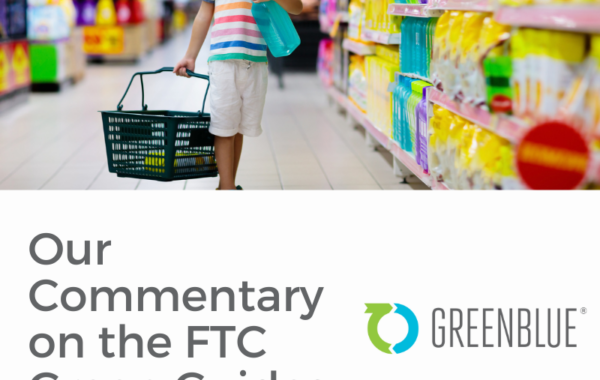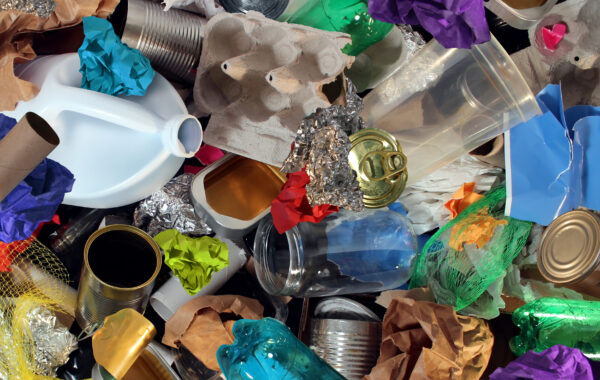October 9, 2018
At SPC Advance last week, George Leonard of the Ocean Conservancy and Romain Troublé of the Tara Expeditions Foundation painted a sobering picture of the state of plastic pollution in our oceans. Based on current trends, by 2050 there will be as much plastic as fish in the oceans. While the plastic visible in surface gyres is disturbing, even more troubling is the fact that this represents only a small fraction of the total plastic in our oceans. An estimated 97% of ocean plastics are found elsewhere – in the water column, in sediments, in sea ice, on shorelines, and even in marine animals that ingest it. This means that solutions like The Ocean Cleanup, which aims to remove debris from the Great Pacific Garbage Patch, will only be able to scratch the surface of the problem in spite of their best efforts. Instead, our best hope is to focus efforts on preventing additional plastic pollution. Over time, the plastic that is already in the environment will sink as it is colonized by microorganisms, ultimately becoming part of the sediment layer.
The impacts of ocean plastics on the biosphere are still being studied, but increasing evidence is pointing to the potential for harm. For example, plastic debris can adsorb environmental contaminants such as polychlorinated biphenyls (PCBs), heavy metals, pesticides like DDT, and more. Because small plastic debris (microplastics) can resemble plankton, a food source for many aquatic organisms, these contaminants enter the food chain when the microplastics are consumed. Many of these chemicals bioaccumulate, meaning they can concentrate on species like tuna that are higher on the food chain (and commonly consumed by humans).
Not all of the plastic in the oceans comes from packaging – microfibers from textiles and discarded or lost fishing gear also contribute significantly. However, nine of the top ten categories of items collected in the Ocean Conservancy’s beach cleanups were single-use plastic packaging and foodservice items. The prevalence of these items in marine debris gets the attention of ordinary citizens, threatening the social license to use plastic (especially in single-use items) and leading many to question our “throw-away lifestyle”. See, for example, the anti-plastic-straw sentiment that’s been making headlines lately. The ocean plastics crisis is one that should be front and center for companies that produce and use plastic packaging.’

The scale of the problem is enormous, and unfortunately, conventional models of recycling will only get us so far. Virgin plastic production is skyrocketing, and only an estimated 1% of plastics are recycled more than once – as George Leonard put it, our current recycling system is just a stopover on the way to the landfill. Even if all plastics used were collected and appropriately sorted, polymers degrade with time and exposure to the elements. They can’t be recycled indefinitely using conventional mechanical methods and still meet the performance requirements for most applications. Plus, many materials, such as multilayer flexible plastic packaging, have little to no value in conventional recycling markets. This means that in locations without adequate waste collection infrastructure, these materials won’t be captured by existing networks of informal waste pickers, and end up in the ocean. Even where adequate collection infrastructure exists, they’ll end up in landfills.

So if conventional recycling methods won’t solve the problem, and cleaning up plastic pollution once it enters the ocean is futile, what can we do to ensure that plastic waste never enters the oceans in the first place? Ocean plastic pollution is a large, complex problem, so the solution will also have many parts. One part of the solution is the development of waste collection infrastructure in at-risk areas. At SPC Advance, Jason Hale of SYSTEMIQ shared what his organization and its partners have done to work with local leaders and community groups to implement waste collection infrastructure and stop leakage into rivers and oceans in several Indonesian cities. April Crow of Circulate Capital also spoke to the need for significant investments in waste management infrastructure in the developing world – an estimated $26 trillion is needed for infrastructure improvement in Asia through 2030.

Perhaps most importantly, we need ways of placing value on plastics that aren’t valued by conventional recycling systems. Priyanka Bakaya of Renewlogy Oceans shared the inspiring story of her company’s work to collect low-value plastics in high-risk areas. They have developed systems to capture plastic waste in rivers that would otherwise end up as marine plastic pollution. Local waste pickers are compensated using a blockchain-based system when they collect the captured plastic. While materials with value in the conventional recycling system, such as bottles, are separated for mechanical recycling, other plastics that would otherwise be of low value are converted into fuels, such as diesel and kerosene, that have high value in local markets. All of this is done via a readily deployable, scalable, modular piece of equipment.
Because Renewlogy’s system actually breaks down the polymers in low-value plastics into fuel molecules, it avoids the issue of the inevitable degradation of polymers when mechanically recycled. Their system is currently being used to process plastics into diesel and kerosene because those fuels have value in local markets. However, similar methods can also be applied to transform low-value plastics into basic chemical building blocks, which could be used to create new plastics with virgin-like performance characteristics.
Whether it takes the form of making fuel through distributed infrastructure in the developing world or making like-new, high-value plastics from recovered feedstocks, the new paradigm of chemical recycling will play a key role in solving the plastic waste crisis and creating valuable, marketable products from waste plastic feedstocks. Indeed, it’s hard to see any other path to unlimited circularity in the plastics economy.





